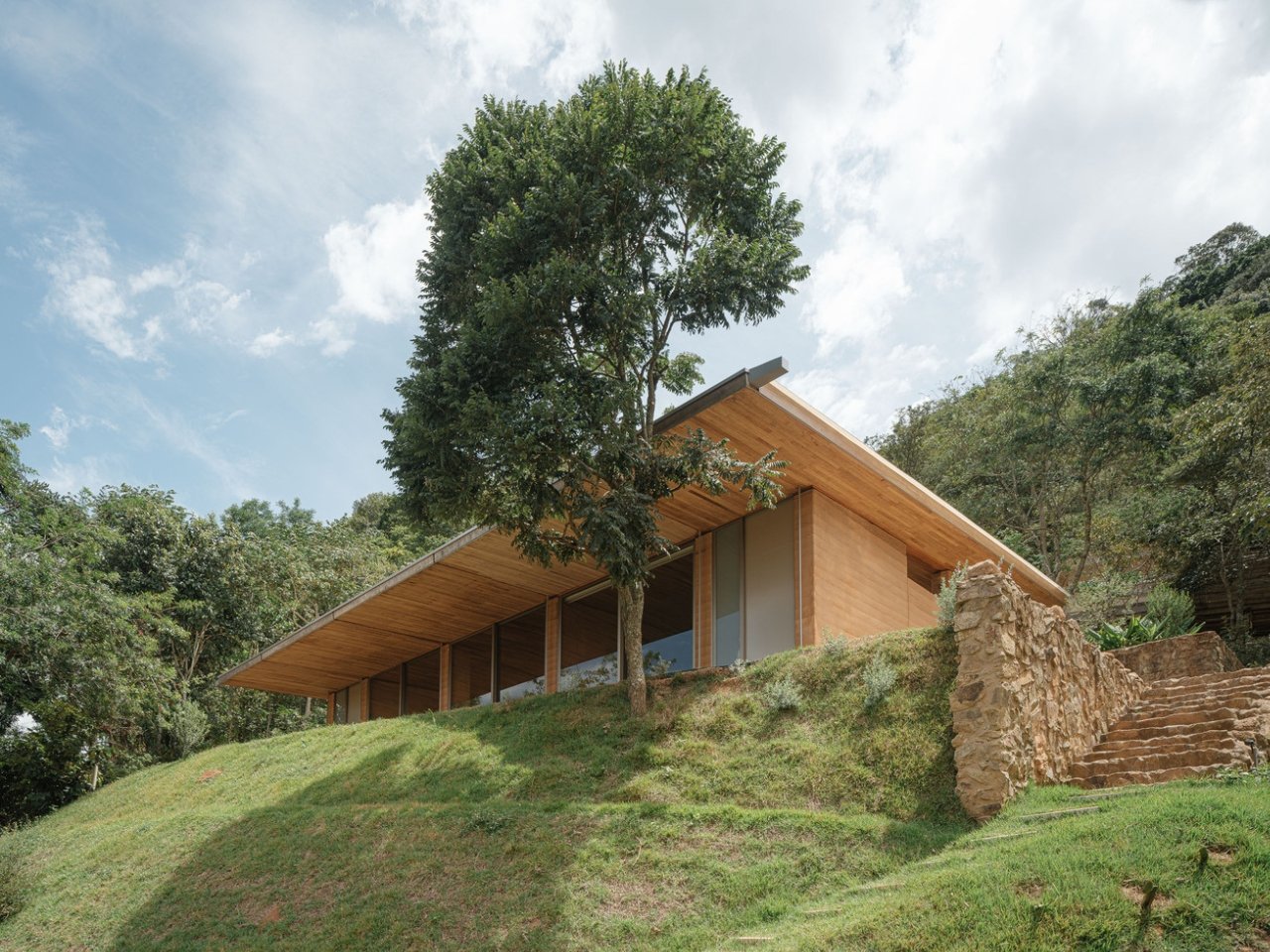Picture this: walls made of compressed earth, windows that frame the Brazilian hillside, and a roof that collects rainwater like nature always intended. It sounds like something from a utopian novel, but Arquipélago Arquitetos just turned it into reality with the Piracaia Eco-Village, and honestly, it might be the coolest thing happening in sustainable architecture right now.
Located about two hours from São Paulo in the village of Piracaia, this project isn’t just another eco-home talking the talk. It’s three distinct residences built using rammed earth construction, a building technique so old it’s new again. We’re talking walls made by literally compressing soil into wooden frames, creating structures that are both load-bearing and breathtakingly beautiful.
Designer: Arquipélago Arquitetos
The genius behind this approach comes from Arquipélago Arquitetos, who developed a modular system that makes sustainable building actually scalable. They created three different home sizes (a studio at 538 square feet, a one-bedroom at 1,076 square feet, and a two-bedroom at 1,245 square feet) using the same basic building blocks. Think of it like architectural Lego, except instead of plastic bricks, you’re working with earth and wood.
What makes these homes special isn’t just the eco-friendly materials. The architecture firm cracked the code on making rammed earth construction repeatable and adaptable. They use wooden frames repeatedly to build foundations and walls, then grow the number of rooms with each consecutive plan. The rammed earth walls aren’t just pretty; they’re the primary load-bearing elements supporting wooden roof panels through compression. Steel tie rods connect the roof to the footings, balancing all those forces to keep everything stable.
The homes nestle into the hillside with a row of clerestory windows at the back, letting in natural light while maintaining privacy. The aluminum roofs do double duty, collecting rainwater that the homes use throughout. It’s that kind of thoughtful design where form and function aren’t just friends; they’re best friends who finish each other’s sentences.
This project had a pretty interesting start. A psychologist named Lia, living alone in São Paulo, watched a Netflix documentary about rammed earth houses and thought, “That’s it. That’s what I want.” She wasn’t just looking to escape the city; she wanted a home that connected her to nature in a meaningful way. After experiences with psychedelics that deepened her understanding of how humans relate to the natural world, she sought a living space that embodied that connection. Lia built one home for herself and two others to sell to people who share her vision, creating an actual ecovillage rather than just a single sustainable home. There’s something powerful about that; building community around shared values instead of just personal retreat.
The construction process itself is fascinating. Artesania Engenharia and engineer Alain Briatte consulted on the rammed earth work, bringing specialized knowledge to compress local soil into walls that will last generations. The wooden structures came from Stamade Estruturas, with detailed installations by Jarreta Projetos. Photography by Pedro Kok captures how these earthy structures seem to grow organically from the landscape rather than imposing on it.
What’s striking about Piracaia Eco-Village is how it challenges our assumptions about sustainable living. We often think going green means sacrificing aesthetics or comfort, but these homes prove you can have both. The natural materials create spaces that feel warm and lived-in, not sterile or performative. The modular design means this approach could theoretically be replicated anywhere with suitable soil conditions.
Projects like this feel important since we’re living in a time of climate anxiety and housing crises. They show us that sustainable architecture doesn’t have to be expensive, complicated, or ugly. Sometimes the answer is literally beneath our feet: good old dirt, thoughtfully compressed and beautifully arranged. Arquipélago Arquitetos took an ancient building technique, applied modern engineering, and created something that feels both timeless and urgently necessary.
The post 3 Rammed Earth Homes in Brazil Just Solved Sustainable Living first appeared on Yanko Design.

